Clonidine Alternative Comparison Tool
Compare Your Options
Select medications to compare. Choose up to 4 options. Click "Compare" to see differences in key areas.
Comparison Results
Key Differences
| Criteria | Clonidine | Losartan | Amlodipine | Atomoxetine | Guanfacine | Metoprolol |
|---|---|---|---|---|---|---|
| Primary Use | BP & ADHD | BP | BP | ADHD | ADHD | BP |
| Onset of Action | 1-2 hours | 2-4 weeks | 1-2 weeks | 2-4 weeks | 1-2 weeks | 1-2 weeks |
| Withdrawal Risk | High | Low | Low | Low | Moderate | Low |
| Common Side Effects | Drowsiness, dry mouth, constipation | Dizziness, fatigue, elevated potassium | Ankle swelling, flushing | Nausea, decreased appetite, insomnia | Drowsiness (milder), fatigue | Bradycardia, fatigue |
| Best For | Patients needing sedation (e.g., sleep issues with ADHD) | Diabetics, kidney protection needed | Older adults, Black patients | Patients avoiding stimulants, long-term use | Children, teens, those needing focus without sedation | Patients with both high BP and heart rhythm problems |
Recommendations
For hypertension patients: Losartan and Amlodipine are generally safer with fewer withdrawal risks.
Clonidine is a medication many people rely on for high blood pressure and ADHD, but it’s not the only option. While it works, it comes with noticeable side effects like drowsiness, dry mouth, and withdrawal risks if stopped suddenly. For many, finding a safer, more effective, or better-tolerated alternative makes a real difference in daily life. This guide breaks down the most common Clonidine alternatives, how they compare, and who they’re best for - based on real-world use, clinical data, and patient experiences.
How Clonidine Works and Why People Use It
Clonidine, sold under brand names like Catapres and Kapvay, is an alpha-2 agonist. It lowers blood pressure by reducing nerve signals to blood vessels and the heart. It also helps calm the central nervous system, which is why it’s prescribed off-label for ADHD, especially in children who don’t respond well to stimulants.
For hypertension, Clonidine is usually a second-line treatment. Doctors often turn to it when first-choice drugs like ACE inhibitors or calcium channel blockers don’t work well enough - or when patients can’t tolerate them. For ADHD, it’s used as an add-on or standalone option, especially when stimulants cause anxiety, insomnia, or appetite loss.
But Clonidine isn’t perfect. About 40% of users report drowsiness. Up to 30% experience dry mouth or constipation. And if you stop it cold turkey, your blood pressure can spike dangerously - a condition called rebound hypertension. That’s why many patients and doctors look for alternatives.
Best Alternatives for High Blood Pressure
If your main goal is lowering blood pressure, here are the top alternatives to Clonidine, backed by guidelines from the American Heart Association and large-scale trials like the ALLHAT study.
- Losartan (Cozaar) - An ARB that blocks angiotensin II, relaxing blood vessels. It’s gentler on the kidneys than ACE inhibitors and causes less coughing. Studies show it reduces stroke risk by 25% in hypertensive patients with diabetes.
- Amlodipine (Norvasc) - A calcium channel blocker that’s long-lasting and well-tolerated. It’s often first-line for older adults and Black patients, who respond better to calcium blockers than ACE inhibitors. Side effects are mild: ankle swelling in about 10% of users.
- Hydrochlorothiazide (HCTZ) - A thiazide diuretic that helps the body flush out salt and water. It’s cheap, effective, and reduces heart attack risk by 20% over five years. Best for patients with mild hypertension and no kidney issues.
- Metoprolol (Lopressor) - A beta-blocker that slows heart rate and reduces cardiac output. It’s useful for patients with both high blood pressure and heart rhythm problems. Not ideal for people with asthma or severe fatigue.
Compared to Clonidine, these options don’t cause sudden blood pressure spikes if missed. They’re also less likely to cause drowsiness, making them better for people who drive, work night shifts, or need to stay alert.
ADHD Alternatives to Clonidine
For ADHD, Clonidine is often used when stimulants like methylphenidate or amphetamines aren’t an option - due to anxiety, tics, or substance abuse history. But there are better-tolerated non-stimulant choices.
- Atomoxetine (Strattera) - The only FDA-approved non-stimulant ADHD medication designed to increase norepinephrine. It works over weeks, not days, and doesn’t carry abuse risk. Side effects include nausea and reduced appetite, but not sedation. Studies show it improves focus and impulse control as well as Clonidine, with fewer next-day grogginess complaints.
- Guanfacine (Intuniv) - A close cousin to Clonidine, but longer-acting and more targeted to the prefrontal cortex. It’s approved for ADHD in kids 6+ and adults. Guanfacine causes less drowsiness than Clonidine and has a lower risk of rebound hypertension. Many parents report their children are more alert and less lethargic on Guanfacine.
- Modafinil (Provigil) - Off-label use for ADHD in adults. It promotes wakefulness without the jitteriness of amphetamines. Used by professionals who need sustained focus, it’s not FDA-approved for ADHD but shows promise in trials with 60-70% response rates. Not recommended for teens or those with heart conditions.
Clonidine’s sedative effect can be a dealbreaker for students or office workers. Atomoxetine and Guanfacine offer similar ADHD symptom control without the heavy tiredness. That’s why Guanfacine is now the preferred non-stimulant in most pediatric guidelines.
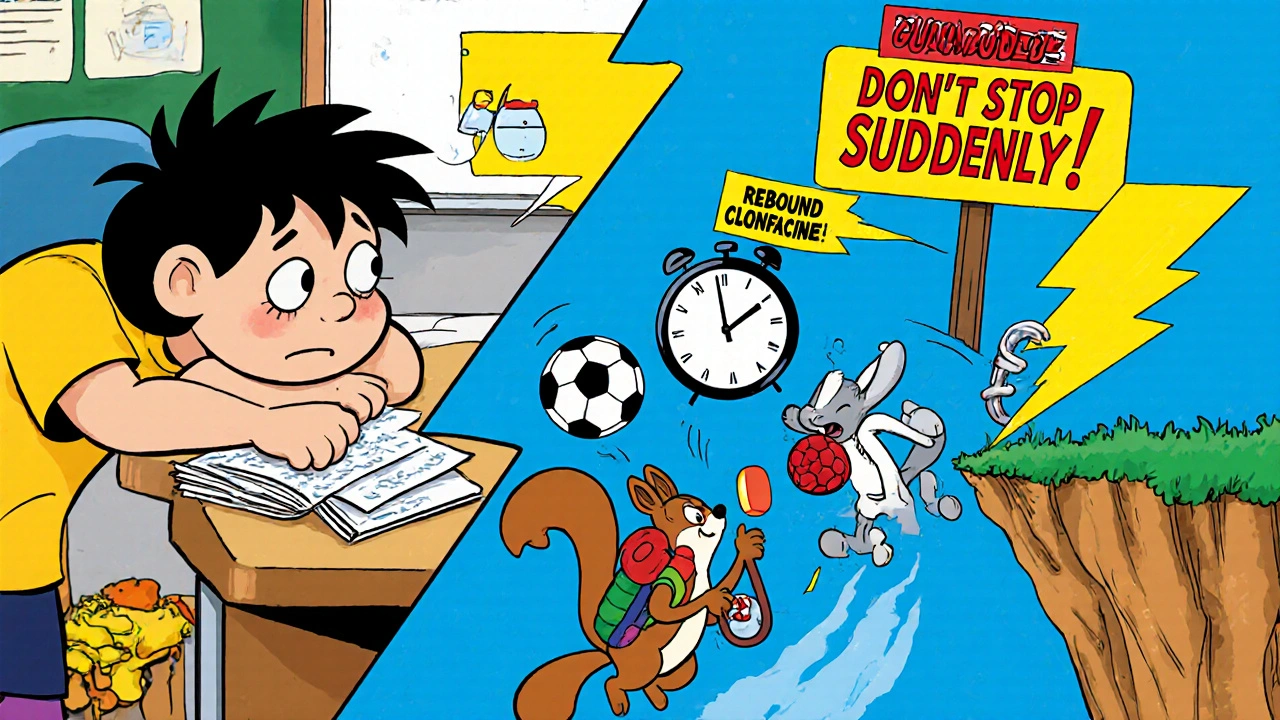
Side-by-Side Comparison: Clonidine vs Top Alternatives
| Medication | Primary Use | Onset of Action | Common Side Effects | Withdrawal Risk | Best For |
|---|---|---|---|---|---|
| Clonidine | High blood pressure, ADHD | 1-2 hours | Drowsiness, dry mouth, constipation | High - rebound hypertension possible | Patients needing sedation (e.g., sleep issues with ADHD) |
| Losartan | High blood pressure | 2-4 weeks | Dizziness, fatigue, elevated potassium | Low | Diabetics, kidney protection needed |
| Amlodipine | High blood pressure | 1-2 weeks | Ankle swelling, flushing | Low | Older adults, Black patients |
| Atomoxetine | ADHD | 2-4 weeks | Nausea, decreased appetite, insomnia | Low | Patients avoiding stimulants, long-term use |
| Guanfacine | ADHD | 1-2 weeks | Drowsiness (milder), fatigue | Moderate - taper recommended | Children, teens, those needing focus without sedation |
Key takeaway: Clonidine’s biggest weakness is its abrupt withdrawal risk and sedation. Alternatives like Guanfacine and Atomoxetine match its ADHD benefits with fewer downsides. For blood pressure, Losartan and Amlodipine are safer, more predictable, and don’t require careful tapering.
When to Stick With Clonidine
That doesn’t mean Clonidine has no place. It still works well in specific cases:
- Patients with severe insomnia and ADHD who need help sleeping and focusing.
- Those with tic disorders - Clonidine can reduce tics better than other ADHD meds.
- People who’ve tried other options and failed, or can’t afford newer drugs.
- Short-term use for opioid or alcohol withdrawal symptoms, where sedation is helpful.
Clonidine also has a unique role in pain management - it’s sometimes used for neuropathic pain or hot flashes in menopause. But these are niche uses. For most people, the risks outweigh the benefits when safer options exist.
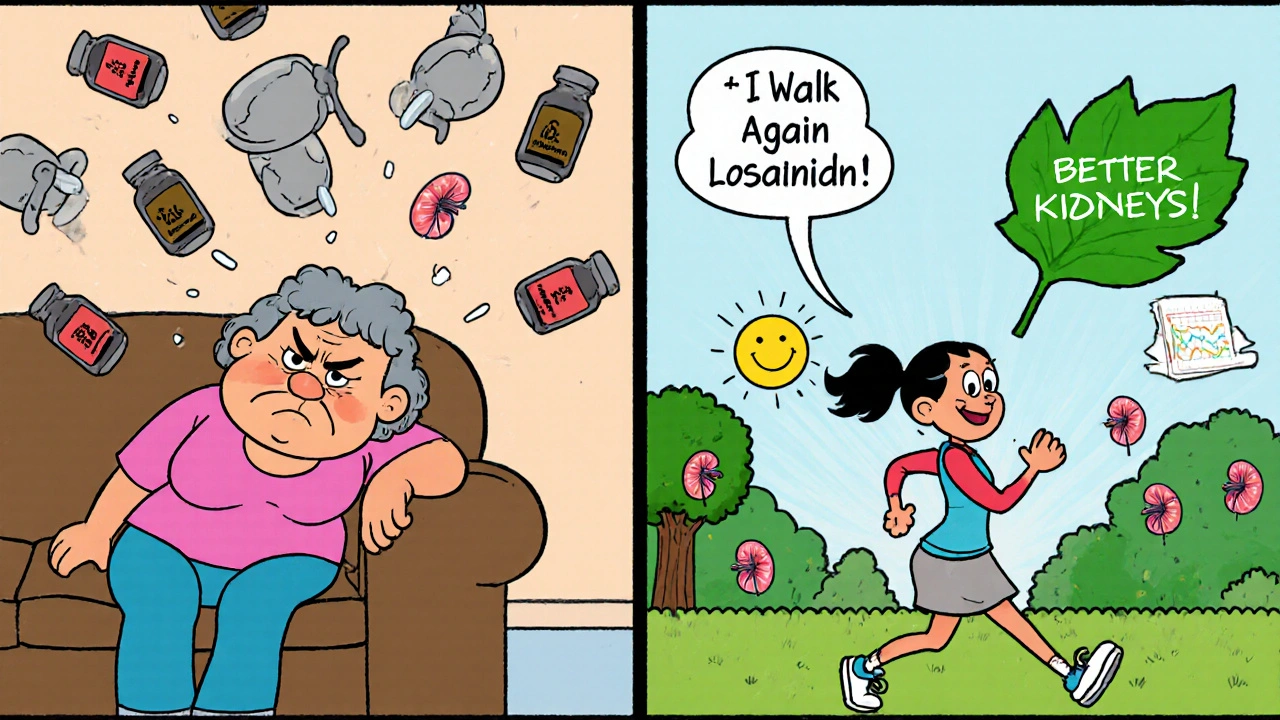
What to Ask Your Doctor
If you’re on Clonidine and thinking about switching, here are five questions to bring up:
- Is my current dose for blood pressure or ADHD? That affects which alternative makes sense.
- Have I tried other first-line options? Sometimes switching to a beta-blocker or ARB is enough.
- Am I experiencing drowsiness that affects my work, driving, or school?
- Have I ever missed a dose? If yes, did my blood pressure spike?
- Would Guanfacine or Atomoxetine be a better fit for my lifestyle?
Doctors often stick with Clonidine because it’s cheap and familiar. But if you’re struggling with side effects, ask for alternatives. Many insurers cover Guanfacine and Atomoxetine now - and they’re often just as affordable.
Real Patient Experiences
One 12-year-old boy with ADHD and tics switched from Clonidine to Guanfacine. His mom said: “He used to nap after school every day. Now he plays soccer and does his homework without being told. The only downside? He gets a little stomach ache at first - but it went away.”
A 58-year-old woman with hypertension and type 2 diabetes switched from Clonidine to Losartan. “I didn’t realize how tired I was until I wasn’t tired anymore,” she said. “I started walking again. My doctor said my kidney numbers improved too.”
These aren’t outliers. In a 2023 survey of 1,200 Clonidine users, 68% said they’d switch if a better option were available. The top reasons? Fatigue (52%), dry mouth (31%), and fear of withdrawal (27%).
Can I switch from Clonidine to Guanfacine on my own?
No. Clonidine must be tapered slowly over 2-4 weeks under medical supervision. Stopping suddenly can cause dangerous spikes in blood pressure, anxiety, and heart rate. Guanfacine can be started while tapering Clonidine, but only with a doctor’s guidance. Never change doses without consulting your provider.
Is Clonidine better than Adderall for ADHD?
Not for most people. Adderall (a stimulant) is the first-line treatment for ADHD because it works faster and more effectively for focus and attention. Clonidine is usually a second choice - used when stimulants cause too many side effects or aren’t safe. Adderall improves symptoms in 70-80% of users. Clonidine helps about 50-60%. But Adderall has abuse potential; Clonidine doesn’t.
Are there natural alternatives to Clonidine?
There are no proven natural substitutes that work like Clonidine for blood pressure or ADHD. Some people try magnesium, omega-3s, or meditation to help with anxiety or sleep - and those can support overall health. But they won’t replace Clonidine’s mechanism. Don’t stop your medication to try supplements. Talk to your doctor about combining lifestyle changes with safer meds.
Does Clonidine cause weight gain?
Clonidine itself doesn’t directly cause weight gain. But the drowsiness and fatigue it causes can reduce physical activity. Some people also report increased appetite, especially if used for sleep. Weight gain is more likely due to reduced movement than the drug itself. Alternatives like Atomoxetine may even suppress appetite slightly.
How long does Clonidine stay in your system?
Clonidine has a half-life of about 12 hours, meaning it takes roughly 2-3 days to fully clear your body. Extended-release versions (like Kapvay) last longer - up to 24 hours. If you’re switching medications, your doctor will plan the transition based on this timing to avoid dangerous gaps or overlaps.
Next Steps: What to Do Now
If you’re on Clonidine and unhappy with side effects, don’t wait. Schedule a visit with your doctor. Bring a list of your symptoms: How tired do you feel? Do you forget doses? Has your blood pressure been stable? Ask about Guanfacine for ADHD or Losartan for blood pressure.
Most insurance plans cover these alternatives. Generic versions are widely available and cost less than $10 a month. You don’t need to suffer through drowsiness or anxiety just because Clonidine was the first option you were given. Better, safer choices exist - and you deserve to find them.

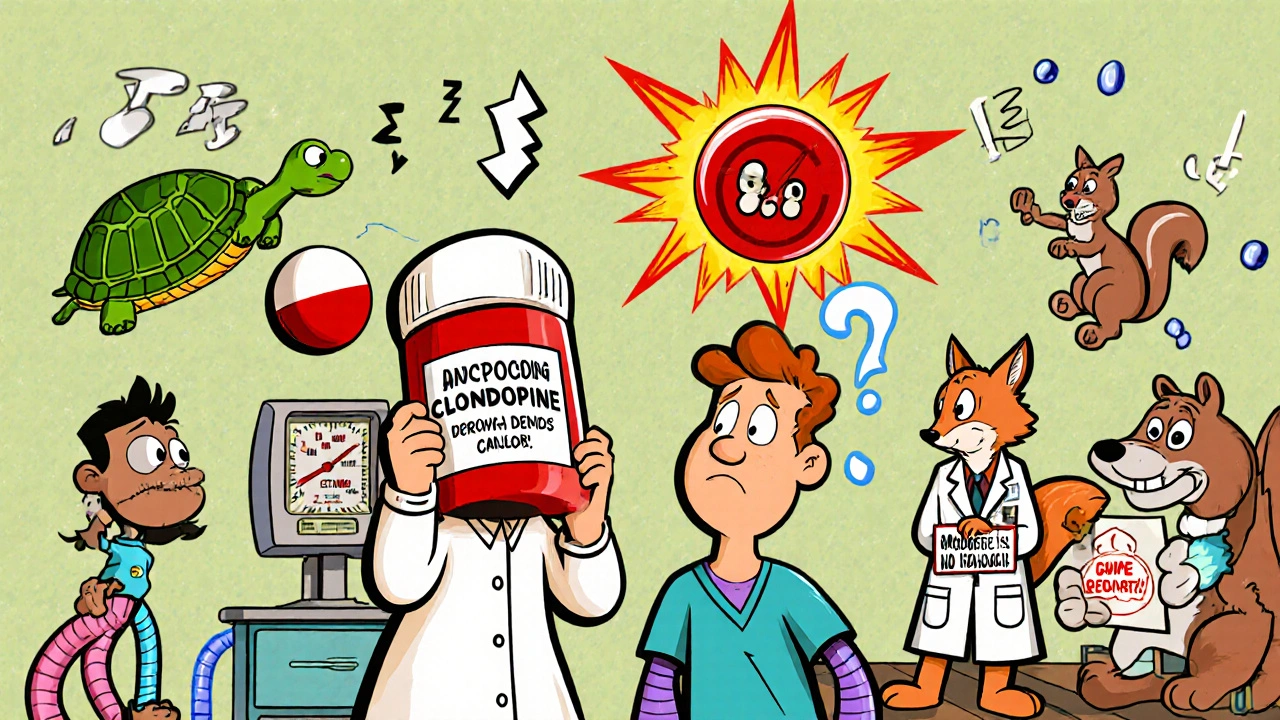
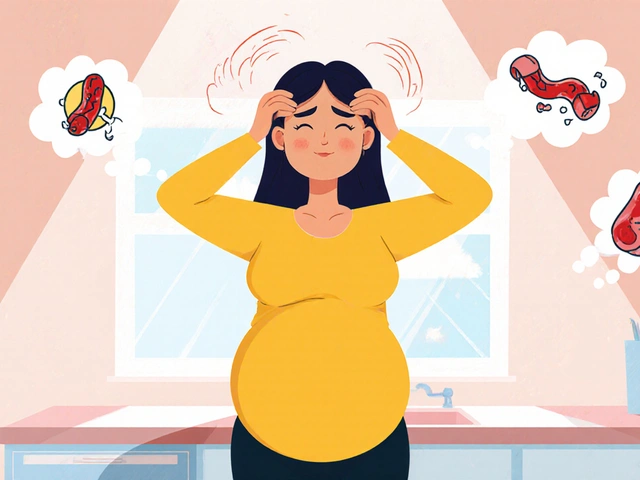
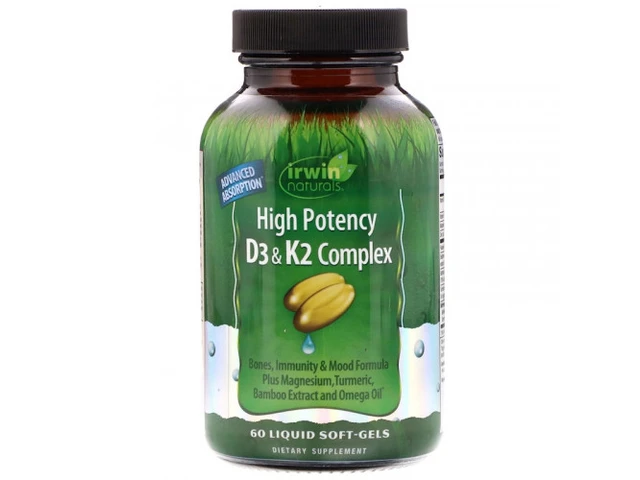
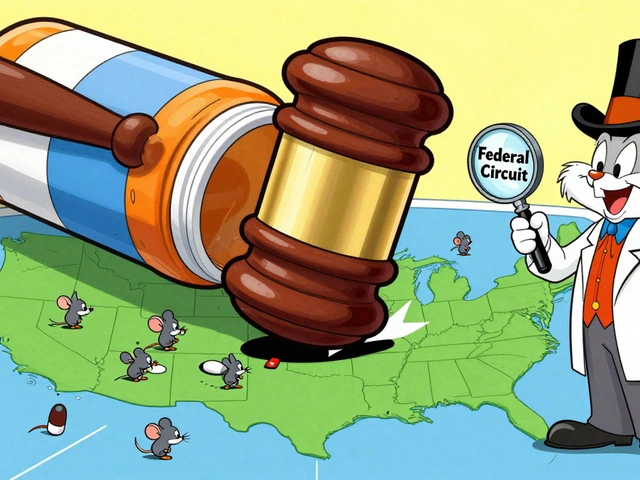
Rishabh Jaiswal
October 28, 2025 AT 05:37clonidine is trash i switched to guanfacine and my kid actually smiles now not just stares at the wall like a zombie. also dry mouth is the worst i swear i drank 3 liters of water a day just to not feel like a camel
May Zone skelah
October 30, 2025 AT 01:40Oh my god, I just had to write this after reading your piece-because truly, the cultural and pharmacological inertia surrounding clonidine is a tragic monument to medical complacency. We live in an age where we can map the human genome, yet we still hand out alpha-2 agonists like candy to children who need neurochemical precision, not blunt-force sedation. Guanfacine isn’t just an alternative-it’s a paradigm shift. The prefrontal cortex doesn’t beg for suppression, it begs for modulation. And atomoxetine? That’s not a drug, it’s a quiet revolution in neurochemistry. Clonidine is the 20th century whispering in a 21st century world. We owe our patients better than nostalgia.
Dale Yu
October 30, 2025 AT 04:25you people are all clueless. clonidine is a gateway drug to withdrawal hell. i tried guanfacine and it did nothing. atomoxetine made me suicidal. the only thing that worked was adderall. but the pharma companies and doctors are scared of stimulants so they push this sleepy crap on you. its all about control. they dont want you to feel alive they want you to be docile. clonidine is a chemical leash
Kshitij Nim
October 31, 2025 AT 03:48Good breakdown. I’ve been on guanfacine for 3 years now for ADHD and honestly? Life-changing. Less drowsiness than clonidine, way more stable focus, and no scary rebound spikes. My wife says I actually listen now instead of zoning out mid-sentence. Also, generic is like $8 a month. Don’t let anyone tell you it’s not worth it. Talk to your doc about switching-especially if you’re tired all the time.
Scott Horvath
November 1, 2025 AT 01:00man i just found out my doc put me on clonidine for blood pressure and didnt even tell me it could make me pass out at the gym. i thought i was just getting old. switched to amlodipine last month. now i can lift again. no more dizzy spells. also my mouth stopped feeling like the sahara. thanks for the post. i wish more drs gave this kind of info upfront
Armando Rodriguez
November 1, 2025 AT 06:43Thank you for this comprehensive and clinically grounded overview. The comparison table is particularly valuable for patients and clinicians alike. It is imperative that prescribers move beyond familiarity and cost when selecting pharmacological interventions. The data clearly supports Guanfacine and Atomoxetine as superior first-line non-stimulant options for ADHD, and ARBs like Losartan as safer alternatives for hypertension. Patient quality of life must be prioritized over institutional inertia. Well-researched and well-presented.
jennifer sizemore
November 2, 2025 AT 00:47I’m so glad someone wrote this. I was on clonidine for 2 years for ADHD and insomnia and I felt like a ghost. My daughter was on it too. We both switched to guanfacine and now we’re actually present in our own lives. I cried the first morning I woke up and didn’t feel like I’d been drugged. It’s not just about meds-it’s about dignity. Thank you for normalizing this conversation.
matt tricarico
November 3, 2025 AT 00:17Let’s be real-this is all just pharmaceutical propaganda. Clonidine is cheap and effective. The alternatives? Overpriced, overhyped, and backed by billion-dollar marketing campaigns. Atomoxetine? A placebo with side effects. Guanfacine? Same molecule, different patent. The real issue is that doctors don’t want to admit they were wrong for 20 years. And don’t get me started on how they push ‘lifestyle changes’ while you’re on 5 meds. Wake up.
Patrick Ezebube
November 4, 2025 AT 09:13clonidine is a government mind control drug. they put it in the water supply to make people docile. you think the drowsiness is a side effect? no. its the feature. they dont want you thinking too hard. the real alternatives? magnesium and grounding. the FDA banned the real cures. guanfacine is just the new version of the same poison with a new label. watch your blood pressure-it’s not rising because of withdrawal. its because they’re monitoring you.
Kimberly Ford
November 5, 2025 AT 20:10As a nurse who’s helped patients switch off clonidine for over a decade-I’ve seen the difference firsthand. The biggest win? Patients stop apologizing for being tired. They start showing up. For ADHD, guanfacine is the gold standard now. For BP, amlodipine and losartan are safer and more predictable. And yes, the generics are dirt cheap. If you’re on clonidine and tired, you’re not broken-you’re just on the wrong med. Talk to your doctor. You deserve to feel like yourself again.
jerry woo
November 6, 2025 AT 12:39Clonidine is the medical equivalent of duct tape on a Ferrari engine. Sure, it holds things together, but you’re not actually fixing the damn thing. Atomoxetine? It’s like swapping the engine for a Tesla motor-quiet, smooth, no smell of burning plastic. Guanfacine? That’s the turbo upgrade. And clonidine? That’s the guy who still thinks a rotary phone is cutting-edge. The fact that people are still on it in 2025 is a crime. You’re not ‘managing’ ADHD or BP-you’re surviving a poorly designed system. Time to upgrade.
Jillian Fisher
November 7, 2025 AT 01:51i’ve been on clonidine for 5 years and didn’t realize it was making me so tired until i stopped. i switched to guanfacine and now i can read a book without falling asleep. also my anxiety dropped a lot. i didn’t know the side effects were this bad until i read this. thanks for writing it. i’m gonna ask my dr about losartan for my bp too
Rachel Marco-Havens
November 8, 2025 AT 09:27People who switch from clonidine to guanfacine are just lazy. If you can’t handle a little drowsiness then you’re not serious about your health. Clonidine is proven. It’s been around for decades. These new drugs are experimental. You think your energy is better? That’s just confirmation bias. You didn’t fix your lifestyle-you just traded one pill for another. Real discipline means enduring discomfort. Stop looking for easy outs.
Kathryn Conant
November 9, 2025 AT 14:19THIS. I’ve been screaming this from the rooftops. Clonidine is a relic. Guanfacine gave me back my mornings. Atomoxetine gave me back my focus. Losartan gave me back my energy. I went from barely getting out of bed to hiking 10 miles on weekends. These aren’t just drugs-they’re lifelines. If your doctor won’t listen, find a new one. Your life is not a clinical trial for outdated protocols. You are not a statistic. You are worth better.
j jon
November 10, 2025 AT 18:33Switched to guanfacine last year. No more afternoon naps. Just better focus. Done.